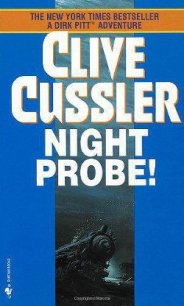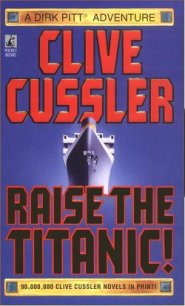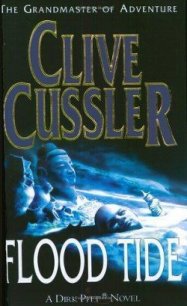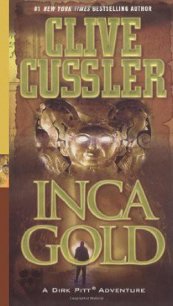Dragon - Cussler Clive (книги хорошем качестве бесплатно без регистрации .TXT) 📗
Pitt stretched to relieve tense muscles. “What happens after the image is received?”
“The Pyramider feeds the image, little more than a smudge, to a tracking data relay satellite that relays it to White Sands, New Mexico, for computer amplification and enhancement. The image is then passed on to the National Security Agency, where it is analyzed by both humans and computers. In this particular case, our interest was aroused, and we called for an SR-Ninety Casper to obtain a more detailed picture.”
Stacy raised a hand. “Does Casper use the same imagery system as the Pyramider?”
Ingram shrugged in regret. “Sorry, all I can reveal without getting into trouble is that Casper obtains real-time imaging recorded on analog tape. You might say that comparing the Pyramider and Casper systems is like comparing a flashlight beam to a laser. One covers a large spread, while the other pinpoints a small spot.”
Mancuso tilted his head and stared at the blown-up photograph curiously. “So what’s the significance of the old sunken bomber? What possible connection can it have with the Kaiten Project?”
Ingram flicked a glance at Mancuso and then tapped a pencil on the photo. “This aircraft, what’s left of it, is going to destroy Soseki Island and the Dragon Center.”
Nobody believed him, not for an instant. They all stared at him as though he was a con man selling a cure-all elixir to a bunch of rubes at a carnival.
Giordino broke the silence. “A mere trifle to raise the plane and repair it for a bombing run.”
Dr. Nogami forced a smile. “It’d take considerably more than a fifty-year-old bomb to make a dent in the Dragon Center.”
Ingram smiled back at Nogami. “Believe me, the bomb inside this B-Twenty-nine has the punch to do the job.”
“The plot thickens.” Pitt nodded glumly. “I smell a snow job coming on.
Ingram did a neat sidestep. “That part of the briefing will come from my partner in crime, Curtis Meeker.”
Pitt’s sardonic stare went from Ingram to Meeker. “You two and Ray Jordan and Don Kern must all play in the same sandbox.”
“We have occasion to mix it up now and then,” Meeker replied without smiling.
Ingram turned again to the easel, removed the photograph, and propped it on a chair, revealing a close-up photo of a little devil painted on the side of the aircraft’s bow.
“Dennings’ Demons,” he said, tapping a pencil on the faded letters beneath the little devil. “Commanded by Major Charles Dennings. Please note the little demon is standing on a gold brick marked twenty-four karat. The crew enjoyed referring to themselves as goldbrickers after they were reprimanded for tearing apart a beer hall during training in California.”
“Obviously my kind of guys,” said Giordino.
“Unknown, forgotten, and buried deep in Langley files, until a few days ago when Curtis and I dug out the facts, was the story of a very courageous group of men who set out on a very secret mission to drop an atom bomb on Japan—”
“They what!” Weatherhill was incredulous, but no more so than the others.
Ingram ignored the interruption and went on. “At about the same time as Colonel Tibbets took off in the Enola Gay from Tinian Island in the Pacific with the bomb known as ‘Little Boy,’ Major Dennings lifted off Shemya Island far to the north in the Aleutians with his bomb, which was code-named ‘Mother’s Breath.’ What was left of the report on the mission was heavily censored, but we believe Dennings’ flight plan called for him to follow a one-way course, dropping his bomb on the target, probably Osaka or Kyoto, and then continuing to Okinawa to refuel before pushing on to Tinian. As we all know from the history books, Tibbets successfully dropped his bomb on Hiroshima. Dennings, unfortunately, vanished, and the entire event was covered over by presidential order.”
“Hold on a minute,” said Mancuso. “Are you telling us that we built more than three bombs in nineteen forty-five?”
Stacy cleared her throat. “Except for Little Boy, the first Trinity bomb at Los Alamos, and Fat Man, which was dropped on Nagasaki, no other bombs are recorded.”
“We still don’t have the exact count, but it appears there were at least six. Most were of the implosion type like Fat Man.”
Pitt said, “Dennings’ bomb makes four. That still leaves two.”
“A bomb with the code name of Mother’s Pearl was loaded aboard a superfort called Lovin’ Lil on Guam, not too long after the island was liberated from the Japanese. Lovin’ Lil was in the air flying toward Japan when Bock’s Car, piloted by Major Charles Sweeney, dropped Fat Man on Nagasaki. After word was received that the drop went off as planned, Lovin’ Lil and her crew were recalled back to Guam, where the bomb was dismantled and shipped back to Los Alamos.”
“That leaves one.”
“Ocean Mother was on Midway Island, but was never airborne.”
“Who came up with those awful names?” murmured Stacy.
Ingram shrugged. “We have no idea.”
Pitt looked at Ingram. “Were Dennings and the crews on Guam and Midway part of Colonel Tibbets’ Five-o-ninth Bomber Squadron?”
“Again, we don’t know. Eighty percent of the records have been destroyed. We can only guess that General Groves, the director of the Manhattan bomb project, and his staff came up with a complicated backup plan at the last moment because there was great fear the firing mechanisms on the bombs might not work. There was also the possibility, although unlikely, that the Enola Gay or Bock’s Car might crash on takeoff, detonating their bombs and wiping out the entire Five-o-ninth and leaving no trained personnel or equipment to deliver additional bombs. And on top of all that, there were a host of other dangers staring Groves and Tibbets in the face—the threat of Japanese bombing attacks on Tinian, mechanical failures during flight, forcing the crew to jettison their bombs in the sea, or being shot down by enemy fighters or antiaircraft fire during the mission. Only at the last minute did Groves see the dark clouds gathering around the bomb-delivery operation. In less than a month’s time, Major Dennings and the Demons, along with the crews on Guam and Midway, were given rush training and sent on their way.”
“Why was all this kept from public knowledge after the war?” asked Pitt. “What harm could the story of Dennings’ Demons cause nearly fifty years later?”
“What can I say?” Ingram made a baffled gesture. “After thirty years passed and it came up under the Freedom of Information Act, a pair of political hack appointees decided on their own that the American public, who paid their salaries by the way, was too naive to be entrusted with such an earth-shaking revelation. They reclassified the event as top secret and filed it away in the CIA vaults at Langley.”
“Tibbets got the glory and Dennings got deep-sixed,” Weatherhill said, waxing philosophical.
“So what does Dennings’ Demons have to do with us?” Pitt put to Ingram.
“Better you should ask Curtis.” Ingram nodded to Meeker and sat down.
Meeker stepped up to a blackboard on a side wall and took a piece of chalk in one hand. He drew a rough sketch of the B-29 and a long, uneven contour line representing the seafloor that stretched across the board’s surface and ended with a sudden rise that was Soseki Island. Thankfully to all in the room, he didn’t squeak the chalk. Finally, after adding in a few geological details on the sea bottom, he turned and flashed a warm smile.
“Clyde has only given you a brief peek at our satellite surveillance and detection systems,” he began. “There are others that have the capability of penetrating through an impressive distance of solid material and measuring a vast array of different energy sources. I won’t bother to get into them—Clyde and I aren’t here to teach a class—but will simply reveal that the explosive device you placed inside the electrical network of the Dragon Center did not do the job.”




